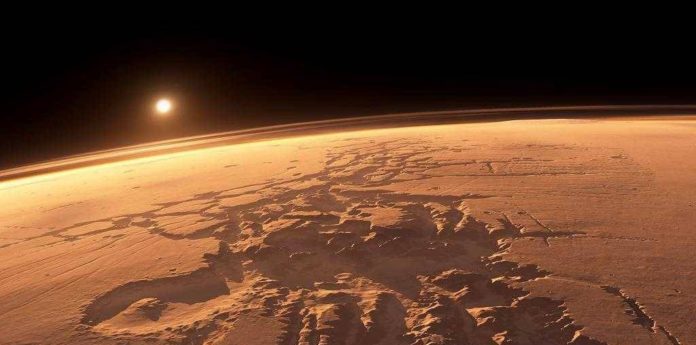
Wageningen University and Research Center in the Netherlands has successfully grown tomatoes, peas and other vegetables. This news on its own isn’t particularly exciting, were it not for the unusual circumstances under which the vegetables were grown. You might even say that the experiment was out of this world.
Soil with the same composition as the sort found in Mars, was used to grow tomatoes, peas, rye, garden rocket, radish and garden cress. The experiment serves as proof that Martian gardening is a viable activity and that under suitable environmental conditions, life could indeed survive on the currently barren planet.
“We used trays instead of small pots and added organic material (fresh cut grass) to the Mars and moon soil simulant,” in a press release, researcher Wieger Wamelink said. “This solved the problem we had with watering in the first experiment and also added manure to the soils.”
Indeed, vegetables grown on the simulated soil thrived and generated the same rate of growth as when they were grown on Earth, with earth. “The total above ground biomass produced on the Mars soil simulant was not significantly different from the potting compost we used as a control. That was a real surprise to us,” Wamelink said. “It shows that the Mars soil simulant has great potential when properly prepared and watered. The biomass growth on the moon soil simulant was less than on both other soils, about half of the biomass. Only the spinach showed poor biomass production.”

NASA’s Johnson Space Center, as seen in the image above, had previously noted that the soil on Mars contains all the nutrients that plants require to survive. The researchers also created simulated lunar soil, though moon cheese has only showed promise as a growth medium for spinach – the opposite result as the Mars experiment.
While the soil used was designed to mimic foreign conditions, the plants were grown in a more local setting; environmental conditions were strictly controlled, temperature, humidity and light were similar to the conditions of Earth. “This is because we expect that first crop growth on Mars and moon will take place in underground rooms to protect the plants from the hostile environment including cosmic radiation,” Wamelink said.
Put down the salad fork though; the researchers have refrained from tasting their produce because it would probably poison them.
“The soils contain heavy metals like lead, arsenic and mercury and also a lot of iron. If the components become available for the plants, they may be taken up and find their way into the fruits, making them poisonous.”
“Further research on this is necessary and that is one of the reasons why a crowdfunding campaign has been started to finance the third experiment that will be all about food safety. The experiment should start in April 2016 with the growth of a new batch of crops including potatoes and beans. If the crops prove to be safe enough to eat, the funders will be invited for dinner where a ‘Martian meal’ will be served that includes the harvested crops; at least for those who dare!”
Sources: UPI, Science Daily
This article (First Time Ever, Researchers Grow Vegetables on Simulated Martian & Lunar Soil) is a free and open source. You have permission to republish this article under a Creative Commons license with attribution to the author(CoNN) and AnonHQ.com.




